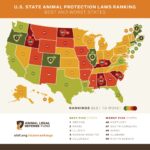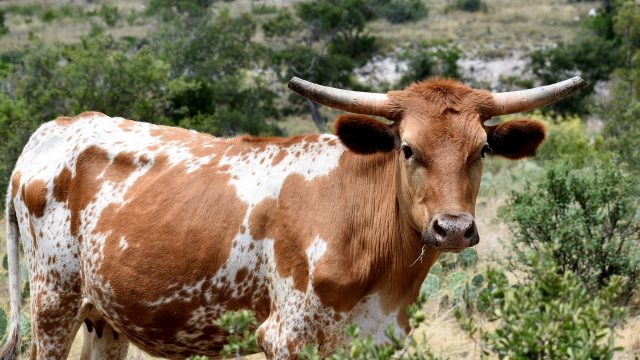
The Link Between Cruelty to Animals and Violence Toward Humans
People who hurt animals don’t stop with animals. There is an established link between cruelty to animals and violence toward humans — regularly referred to as “The Link.”
This link makes it critically important that cruelty toward animals be taken seriously by law enforcement, and by society at large. This is for the sake of the animals themselves, and for people who are also at risk.
Research Shows the Link Between Cruelty to Animals and Toward Humans
Ample research backs up the finding that there is a direct link between acts of cruelty to animals and violence toward humans. This includes child abuse, domestic violence, elder abuse and other violent behavior.
Here are just a handful of examples of the research supporting that conclusion:
A landmark 1997 study by the Massachusetts Society for the Prevention of Cruelty to Animals and Northeastern University found that animal abusers are in fact five times as likely to also harm other humans.
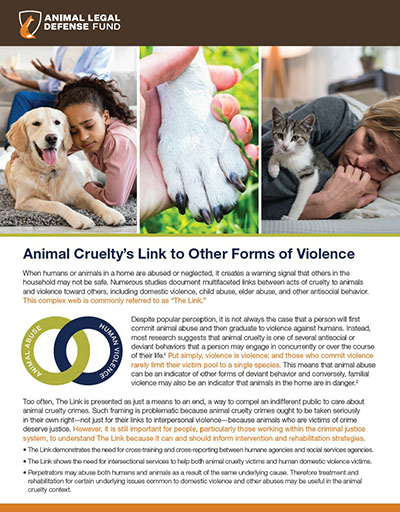
The Link Factsheet
Download our factsheet on the link between cruelty to animals and violence toward humans.
Another study, published in 2013, found that 43% of those who commit school massacres also committed acts of cruelty to animals — generally against cats and dogs.
Phil Arkow, coordinator of the National Link Coalition — a group focusing on the intersection between violence toward animals and humans — has written often about animal abuse being an indication of domestic violence, or what’s called a “predictor crime.”
Indeed, a 1983 study notes that animal abuse was found in 88% of homes in which physical child abuse was being investigated.
If a child is cruel to animals, research shows it may be a sign that serious abuse or neglect has been inflicted on the child. Children who witness animal abuse are at greater risk of becoming abusers themselves.
A 2017 study showed that 89% of women who had companion animals during an abusive relationship reported that their animals were threatened, harmed, or killed by their abusive partner.
This finding is in line with other research showing that domestic violence toward pets both correlates with domestic violence toward humans, and is also a tool of domestic abuse — violent members of the household will threaten to hurt or actually hurt a companion animal as a method of control and a form of emotional violence. Indeed, more than half of women in domestic violence shelters report that they delayed their escape out of fear for their animals.
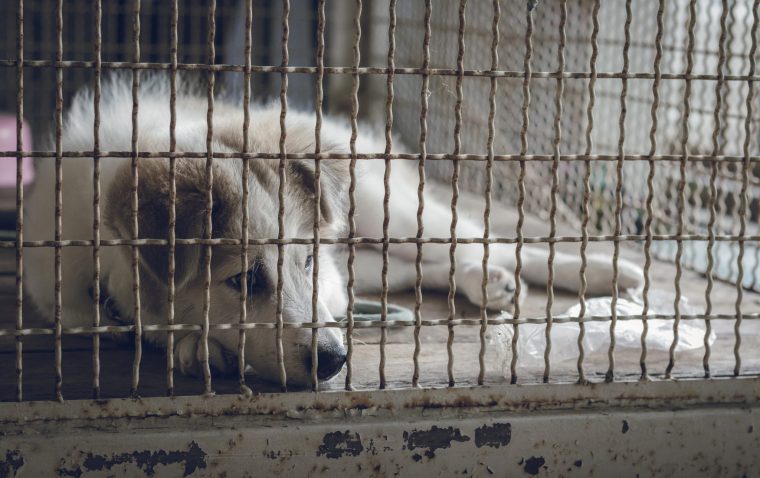
The Law Must Protect Animals and Punish Animal Abusers
Both because animals themselves need protection, and because of the link between cruelty to animals and cruelty to humans, violence against animals must be taken seriously under the law.
There are some ways in which the law is reflecting this seriousness. For example, all 50 states now have felony animal cruelty laws on the books. Nearly two thirds of states allow pets to be included in domestic violence protective orders. These are just among the advances we’ve seen at the state level in this area.
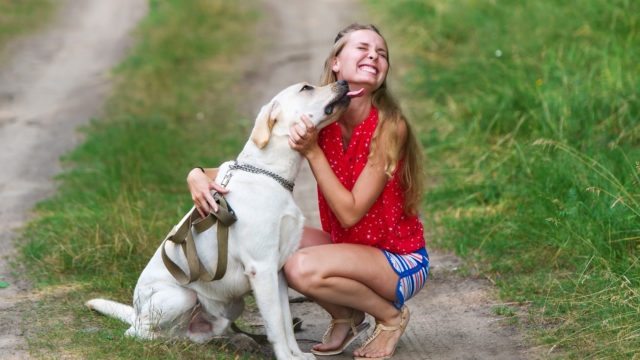

There are felony provisions in all 50 states and the District of Columbia for intentionally killing a dog or cat.
At the federal level, there is progress, too. As of 2016 the FBI began tracking crimes against animals in the National Incident Based Reporting System (NIBRS), in the same way it tracks other serious criminal offenses. This tracking will help paint a better picture of who is committing crimes against animals, and where these crimes are taking place — and will thus also help indicate where humans are also at risk.
But we are not yet at the point where cruelty to animals is consistently reported, investigated, prosecuted, or punished in ways that match the seriousness of the crime.
How to Help
The law is only just beginning to catch up with the Americans’ widespread view that animals are family members who need robust protection under the law. This is both for the sake of animal victims and for the safety of communities more broadly.
Animal Legal Defense Fund 2023 State Animal Protection Laws Ranking Report
See the best and worst states for animal protection laws
Animal protection laws vary from state to state, and so we face a patchwork of laws across the country. To see how well your state is protecting animals, and where it needs improvement, see the Animal Legal Defense Fund’s annual State Rankings Report, ranking the animal protection laws of all 50 states.
You can also let your lawmakers know that you care about this issue, and that you want to see your state’s animal protection laws strengthened, and stronger enforcement of those laws.
Ways to Give
Since 1979, the Animal Legal Defense Fund has been the leader in the fight to win animals the legal protection they so desperately need—and deserve. Your generous support is vital to our continued success.
Focus Area
How We Work
Related
-
$5,000 Reward for Information Regarding Six Killed and Mutilated Cows in Three Texas Counties
Cows were killed in Madison, Brazos, and Robertson Counties, Texas.May 3, 2023 Press Release -
Animal Legal Defense Fund Will Seek Justice for Abused Horse in Oregon’s Highest Court
Following the dismissal of Justice’s case upheld on appeal, the Animal Legal Defense Fund continues to seek accountability under the law.September 1, 2022 Press Release -
Washington State Supreme Court Rules Animal Cruelty Can Be a Crime of Domestic Violence
On February 8, 2022, the Washington State Supreme Court issued a decision in the case State v. Charmarke Abdi-Issa, holding that animal cruelty could be designated a crime of domestic violence, and that an animal’s guardian could be considered a victim of the crime.March 9, 2022 News
Donate to Protect Animals
Help animals win the legal protections they so desperately need and deserve, and ensure they have an advocate in courtrooms and legislatures across the country.
